UPK_Site Analysis
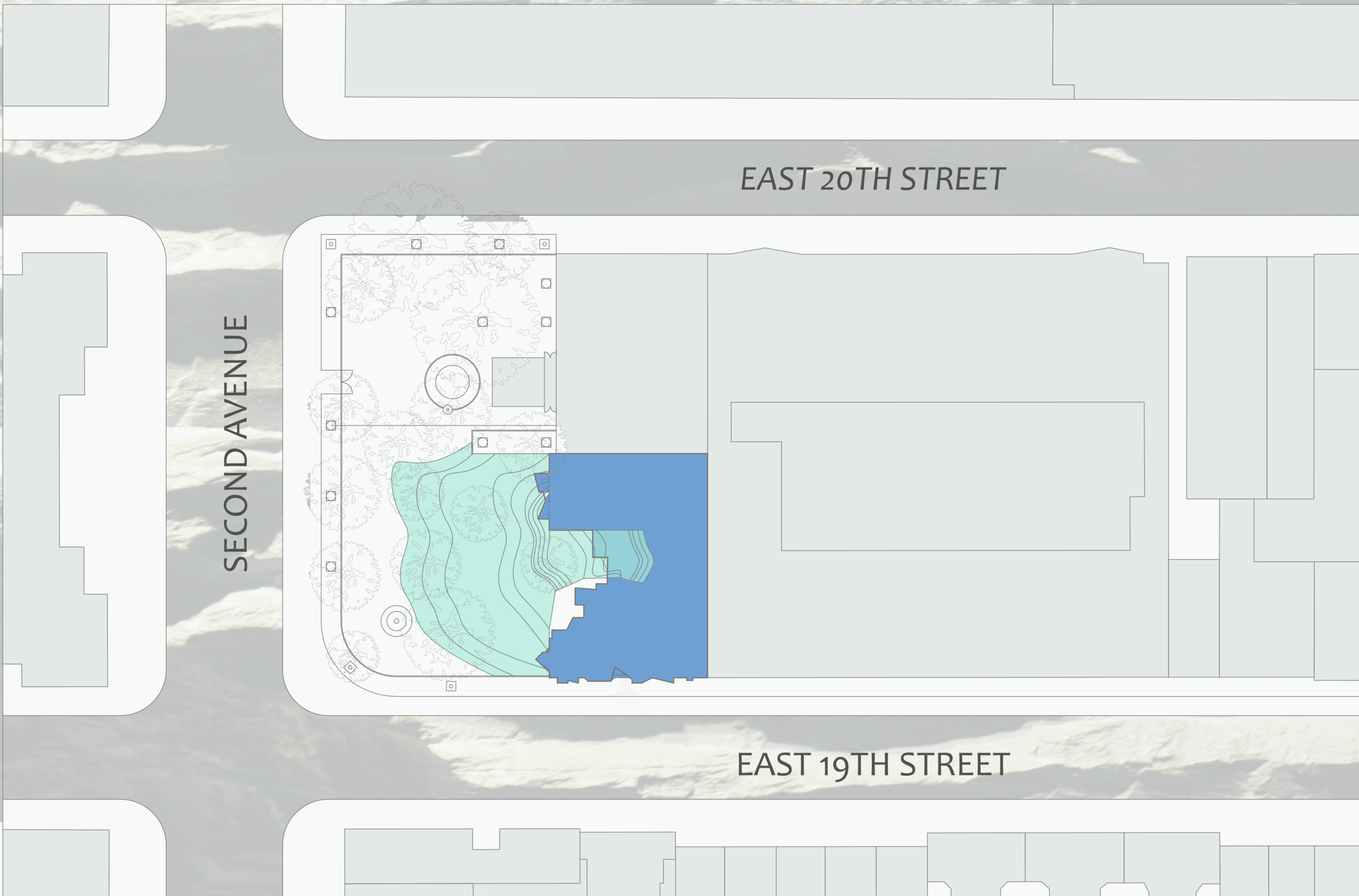
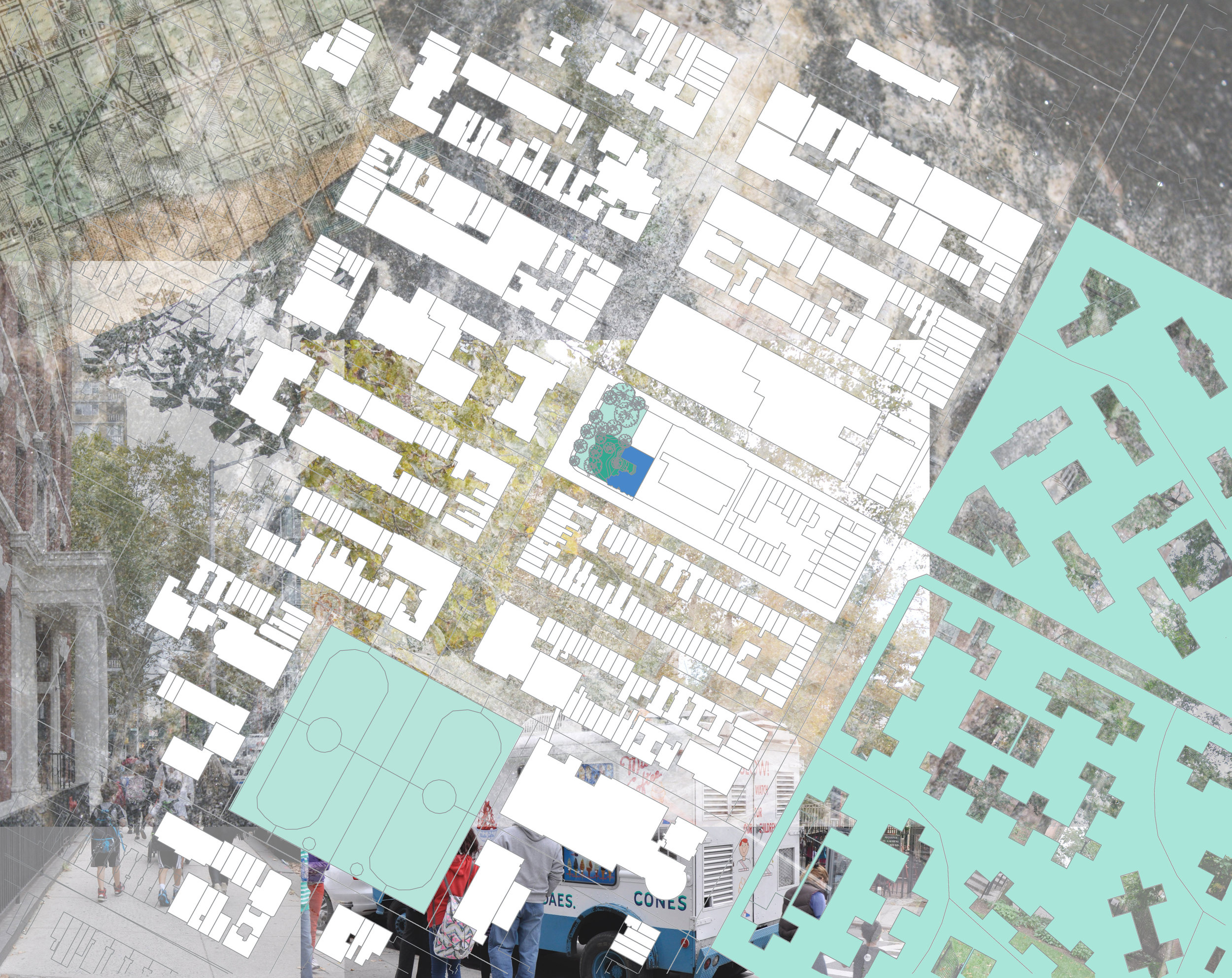
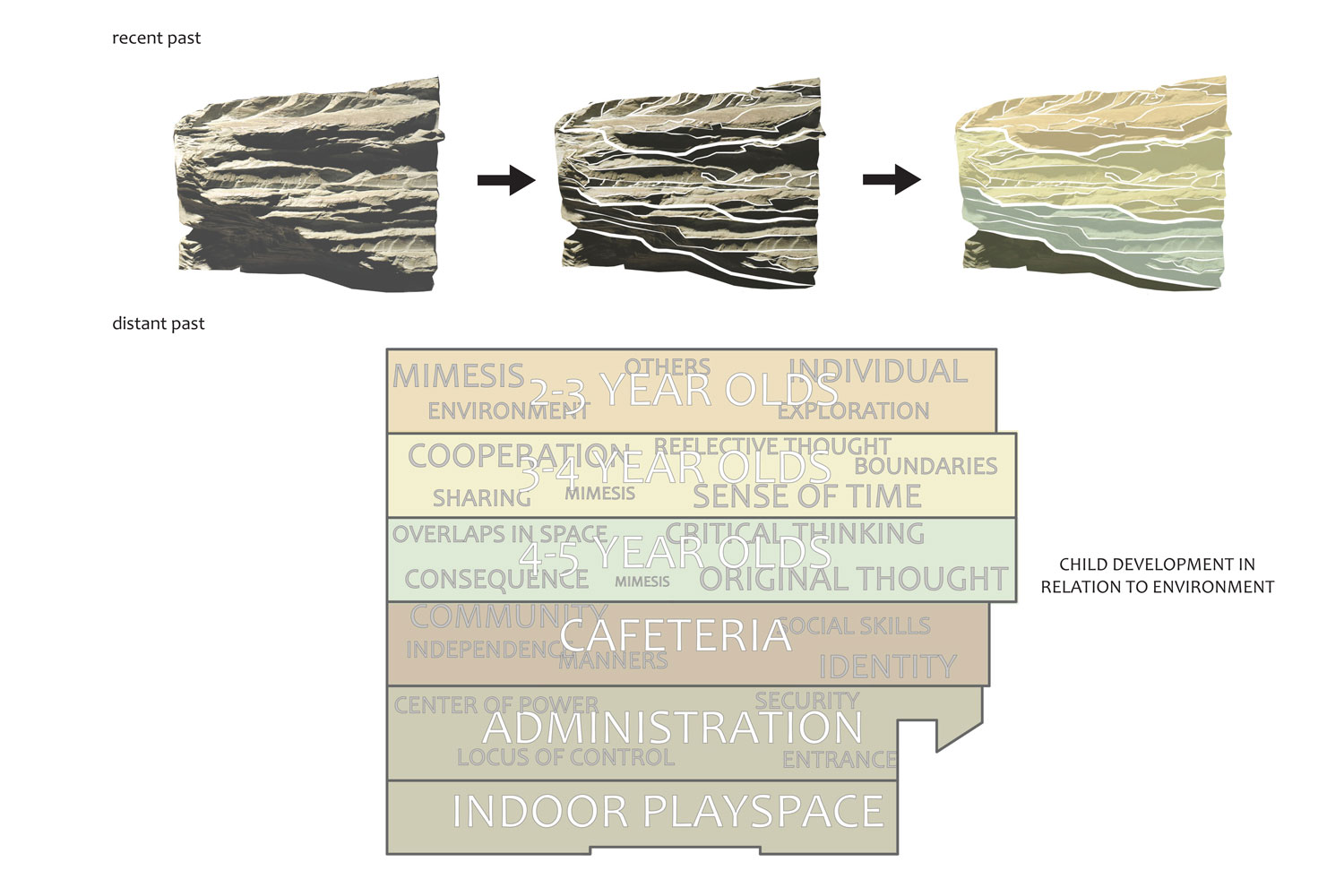
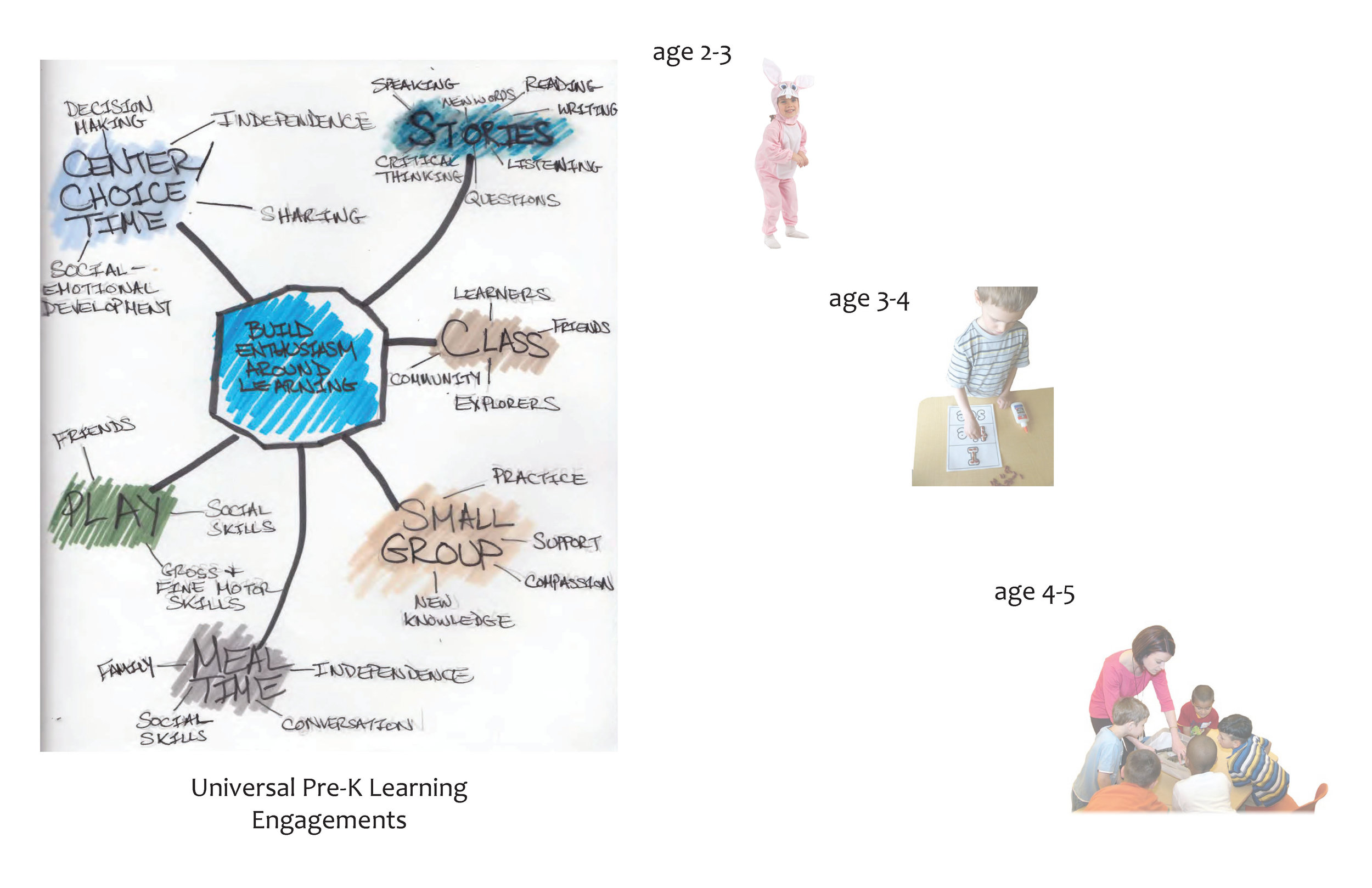
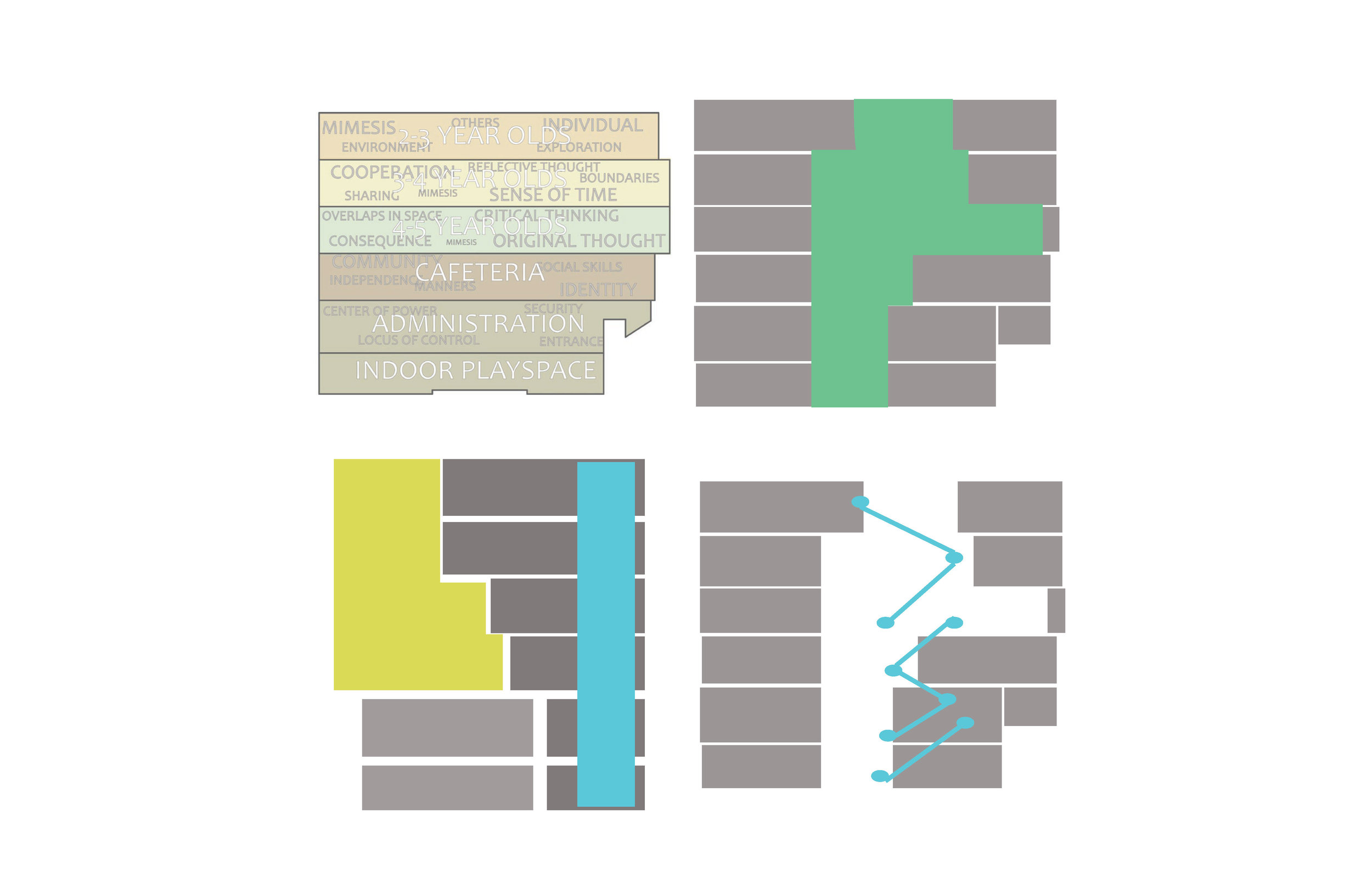
Note proximity to green spaces.
In many ways, the developing goals of children in the upk program resemble that of striated rock formations--older layers on the bottom, newer layers on the top; highly differentiate upper layers due to exposure to elements, and more stable base layers at the bottom.
Younger kids mimetically learn from older children by traveling up the building.
Green for views and access to green space. Yellow for educational/classroom areas. Blue for circulation.